Have you been intrigued by the spiritual significance of centipede symbolism? As a seasoned spiritual guide, I can offer valuable insights and guidance on this topic.
From ancient folklore to modern-day pop culture, the centipede’s symbolism of adaptability and resilience has captured the fascination of those seeking to overcome life’s challenges.
This article will provide a comprehensive analysis of the symbolism of centipedes, which will not only enlighten you about their significance but also help you understand how this knowledge can benefit you.
Table of Contents
Key Takeaways
- The centipede’s symbolism of adaptability and resilience has captured the fascination of those seeking to overcome life’s challenges.
- The centipede is viewed as a symbol of agility, adaptability, regeneration, resilience, and unexpected danger.
- In different cultures, the centipede is seen as a sign of good fortune, power, protection, and a connection between the dead and the living.

Centipede spiritual meaning
Often found in dark, damp places, the symbolism behind the centipede is vast and rooted in spirituality. They have been used for centuries to represent an individual’s life journey and their ability to overcome challenges and strive for success.
A creature of immense power and vigor, let’s look at the centipede symbolism and how helpful these creatures are according to our spiritual beliefs.
Speed and agility
Gifted with 15 to 177 pairs of legs, the centipede can move quickly and navigate through different terrains with ease. Several species can reach speeds of up to 1.3 feet per second. Such traits make them symbolize quick thinking, versatility, and the ability to overcome challenges quickly.
Considered an important component in sports, agility enhances an athlete’s ability to move quickly and change direction easily. It also helps people avoid unexpected collisions and accidents that may lead to injury.
Adaptability
Known for its ability to thrive in various environments, the centipede inspires us to be adaptable and versatile. The centipede totem enables us to perform multiple tasks, which can lead to greater career opportunities.
The centipede’s presence helps us adapt to life’s different situations. Since change is inevitable, these highly resilient creatures urge us to adapt quickly to gain a competitive advantage over others.
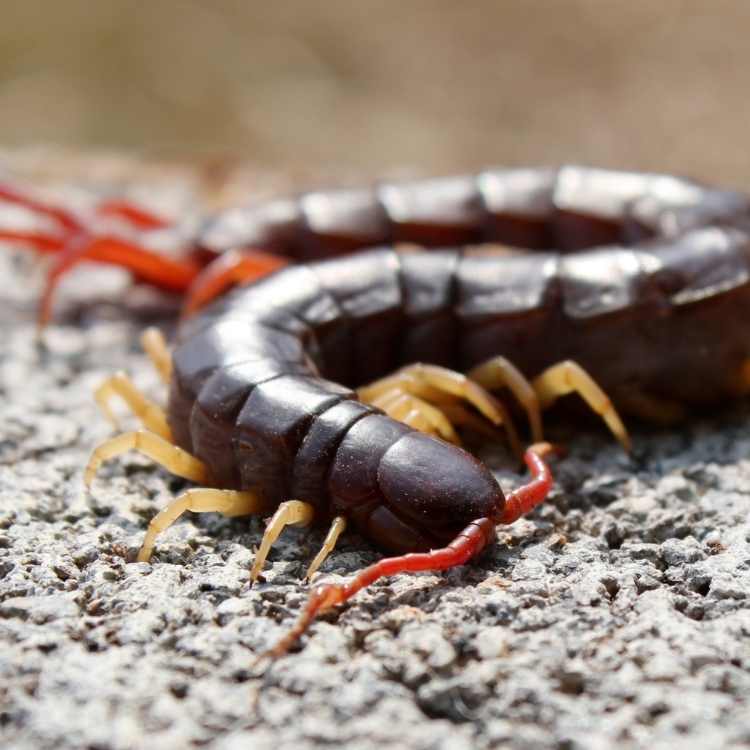
Regeneration
While very few creatures can regrow lost limbs, the centipede is an amazing one that can. Often linked to serpents, they also shed their skin as they mature into adults. These traits have made these tiny creatures a powerful symbol of spiritual growth and transformation.
The distinct qualities of the centipede encourage us to shed our old, unpleasant habits to make way for more helpful ones. Centipedes give us the courage to break free from our old beliefs and behaviors, often leading to increased self-awareness and purpose.
Resilience
The centipede’s ability to reproduce lost legs and regrow its skin after molting has been viewed as a symbol of resilience and our ability to bounce back from our challenges and difficulties. They give us the courage to face adversity and navigate future challenges with ease and confidence.
Centipedes are ancient creatures. Fossil evidence suggests that centipedes first appeared more than 400 million years ago.
They have survived multiple mass extinctions, evolved into various species, and adapted to different environments. It symbolizes wisdom, personal growth, and the ability to bounce back from adversity.
Determination
Centipedes are insatiable predators. They feed on spiders, insects, and other small invertebrates. It uses its venomous jaws to inject poison and immobilize its prey. Their tenacity in pursuing dinner represents determination, resilience, and the ability to persevere through difficulties.
Unexpected Danger
The centipede’s nocturnal habits made various cultures see them as creepy crawlers, bringing forth negativities and bad omens. Its fondness for burrowing in the dirt and its venomous bites are believed to indicate unforeseen obstacles and threats that may arise.
The presence of centipedes serves as a warning that helps us avoid potential risks and dangers. This arthropod allows us to recognize troublesome situations and equips us to handle unexpected circumstances.
The centipede symbolism in different cultures
Centipedes are said to be a sign of good fortune and wealth. They bring balance, concentration, and coordination- all necessary for success! Here is the centipede’s spiritual significance in various cultures.
| Culture | Symbolism |
|---|---|
| China | The centipede is seen as a powerful and fierce creature in Chinese mythology, often associated with martial arts and warfare. In traditional Chinese medicine, centipedes are also used for their healing properties. |
| Japan | In Japanese folklore, the centipede is a symbol of courage and perseverance, as it is known for its ability to continue moving forward even when injured. However, it is also seen as a bad omen and associated with misfortune. |
| Hawaii | In Hawaiian culture, the centipede is a symbol of protection and defense, believed to ward off evil spirits and negative energies. However, it is also considered a nuisance and a pest. |
Chinese culture
In Chinese culture, centipedes are seen as creatures that bring good luck and abundance. It is perceived that the presence of a centipede at home or in the workplace symbolizes prosperity and success.
The Chinese believe that the more legs a centipede possesses, the greater the fortune it will bring.
The centipede is also seen in Chinese feng shui as a protector that wards off evil spirits and keeps us away from negative energies. They are also valued for their healing properties and are used in traditional Chinese medicine to treat various ailments, including snake bites, arthritis, and headaches.
African culture
Several African tribes associate the centipede with transformation and renewal. Their ability to change their skin and regenerate their legs is believed to symbolize the cyclical nature of life, death, and rebirth.
Considered a powerful healer, centipedes are widely used in African traditional medicine. They are used for treating illnesses such as fever, infections, and stomachaches.
The centipede is believed to represent the spirit world and the connection between the dead and the living. Their presence is a reminder that our deceased loved ones are watching over us and providing us with guidance.
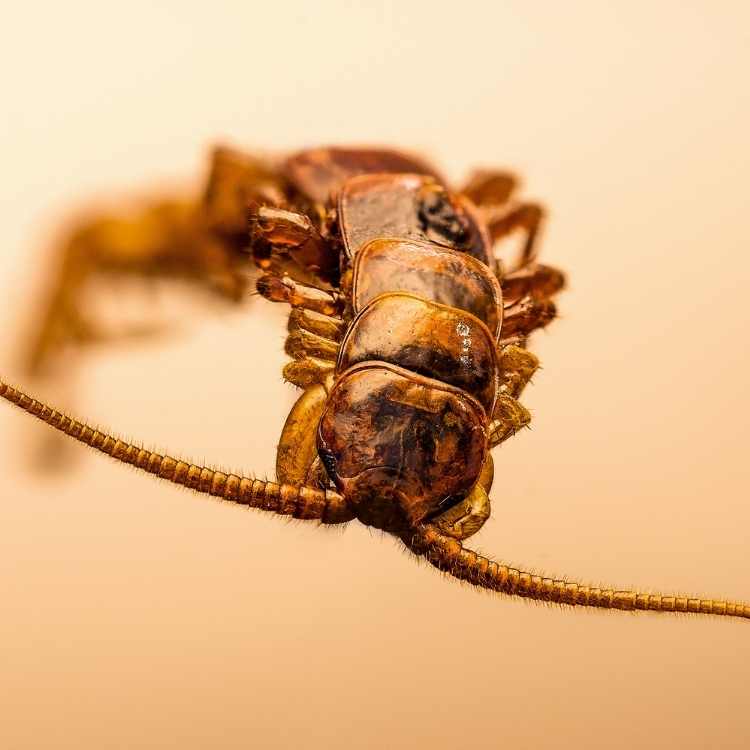
Native American culture
Native Americans see the centipede as a symbol of power and protection. Several tribes used centipede motifs in art and jewelry, for they were believed to have the ability to protect them from evil spirits and to ward off negative energy.
The centipede spirit animal is also valued for its medicinal properties and is traditionally used to treat arthritis and certain respiratory illnesses. They are also used in various spiritual healing practices, for they are believed to have the ability to heal the spirit, mind, and body.
American Indians also saw the centipede’s ability to shed its skin and regenerate lost limbs as a sign of personal growth and spiritual transformation. They are believed to have inspired many tribes to overcome challenges and adapt to new situations.
Hindu culture
In Hinduism, centipedes are considered a symbol of prosperity and good fortune. It is believed that the creature’s many legs represent abundance and the potential for success, as they help us move towards accomplishments and progress.
The centipede is associated with several gods and goddesses, including Kali, the deity of time, sexuality, and death. It is believed that Kali used centipedes to protect her followers and overcome obstacles.
In addition, Hindus used centipede home motifs and amulets to protect them from life’s negativities and push away evil spirits.
Christian culture
There are also references to centipedes in Christian culture and the bible. In Exodus, chapter eight, it is said that huge swarms of these creatures were plaguing Pharaoh- so much so that he begged Moses to make them go away.
In Revelations 12:09, John mentions a dragon with seven heads and ten horns defeated by “the Lamb,” which some people interpret as Jesus Christ. This could be interpreted as a symbol of the victory of good over evil or of Christianity over paganism.
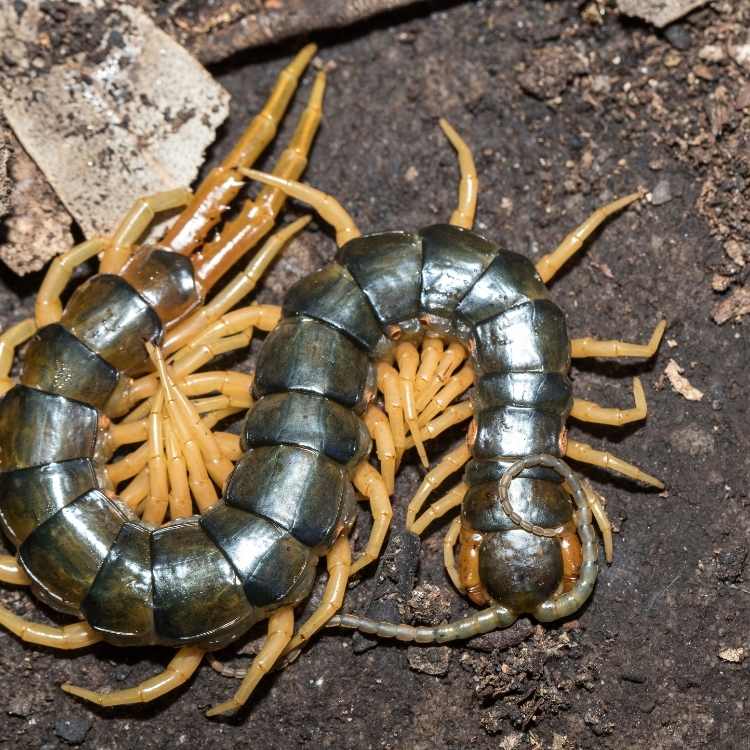
Centipede mythology and folklore
Centipedes have been a part of tales in many cultures. Many see them as creatures that bring healing, spiritual strength, and perseverance. As the symbolism of these well-legged creatures varies, it is best to look at these powerful crawlers’ significance in mythology and folklore.
The Legend of Okuninushi
The story of Okuninushi is a well-loved Japanese mythology that tells us about a god who conquered great trials, which made him a powerful figure among the Japanese deities. The son of the god of the sea, he ruled the land of Izumo and was favored for his ability to heal ill people.
Okuninushi’s brothers were jealous of his powers and conspired to kill him. Legend has it that while he lay dying in a forest, he encountered a centipede that offered to help.
The centipede instructed Okuninushi to bathe in a nearby river and roll in the ashes of a fire right after. After our hero did so, he was transformed into a strong young man and eventually became a powerful god.
The story is often seen as indicating our ability to overcome adversity. Centipedes are often related to dragons, a revered image in Japanese martial arts. It also highlights the importance of resilience and perseverance, which often lead to success and happiness.
The Centipede Demon
Regarded as a hideous creature that haunted the mountains of Japan, Omukade is a giant centipede that possesses supernatural powers. Preying on humans and capable of causing great harm, it is said that the centipede demon thrives in dark, hidden places and can only be eliminated by a skilled warrior with a pure heart.
Often depicted in literature and art, the Omukade is considered a symbol of fear and danger. Its venomous attacks and poison are believed to represent disease, illness, and threats that lurk in the world.
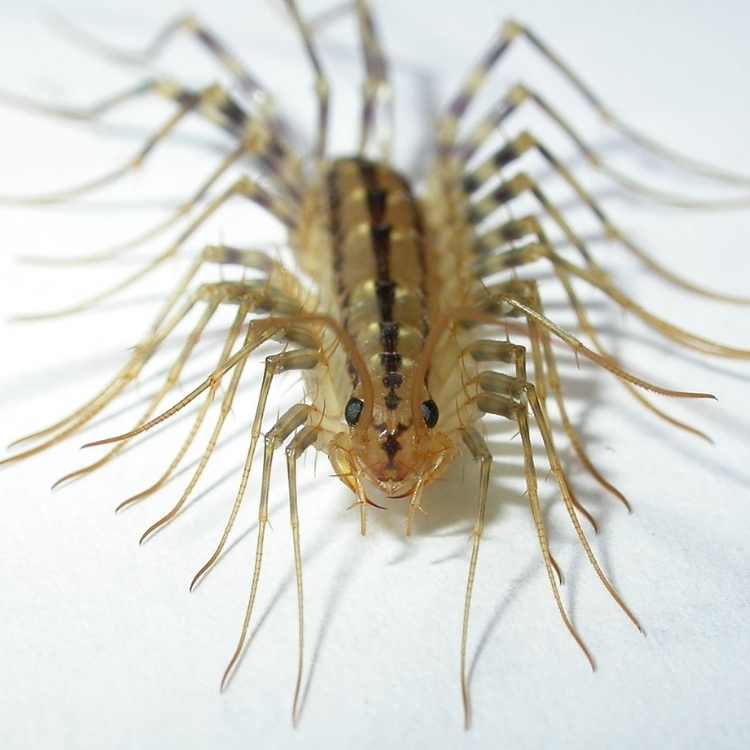
The centipede in literature and art
While centipedes may not be the most attractive of creatures, they provide a unique perspective and engage different themes and emotions in various literary works. From a controversial film to a whimsical poem, here’s how the centipede is viewed in art and literature.
Hundred-legged Worm in Japanese Art
In Japanese art, the image of a “hundred-legged worm,” known as Mukade, often appears in traditional woodblock prints and paintings. This creature is depicted with a long, segmented body and numerous legs.
The Mukade is typically portrayed as a fierce and powerful creature associated with strength and protection. It is often used in Japanese art, folklore, and tattoos to symbolize tenacity, resilience, and warding off evil spirits.
The Centipede’s Dilemma by Katherine Pyle
This thought-provoking poem tells the story of a centipede who is asked how it coordinates its numerous legs while walking. As the centipede begins to reflect on the mechanics of its movement, it becomes paralyzed with indecision and can no longer walk.
The poem by Katherine Pyle explores the concept of overthinking and the perils of questioning our innate abilities.
The Human Centipede by Tom Six
This horror film has gained worldwide attention for its grotesque and controversial concept. The movie revolves around a deranged surgeon who abducts individuals and surgically connects their mouths to their anus, creating an unsettling human centipede.
This extreme and disturbing representation of a centipede in a human context has sparked discussions about the boundaries of art and horror.
The centipede in dreams
Centipede dreams are said to be a good omen of luck and abundance! The centipede tells you there are great things ahead and to keep up the hard work because fortune will soon be yours.
A centipede in your dreams represents progress. However, if this totem animal slows down, it indicates a delay concerning achieving goals and reaching milestones.
Centipedes are known to be omens of good luck, but a centipede in your dream can be seen as a sign that you should prepare for some competition or rivalry.
Centipede as totem
The centipede totem serves as a reminder that we have what it takes to overcome any obstacle. You are tenacious, courageous, and gifted with inner strength. You can face fears head-on and move through challenges with ease.
When we see a centipede, it might be time to take a closer look at what is happening in our lives and what challenges we may face. They can also be seen as a sign that we need to pay more attention to what is happening around us- especially the things we fear or find creepy.
People with the centipede animal totem are often smart and insightful decision-makers. They possess an unrivaled ability to navigate life on their feet, which has helped them become leaders in business or government.
The centipede is also associated with transformation, as it undergoes many life changes. They teach us that change is constant and that we must be willing to adapt if we want to survive.
If you have the centipede totem, know that you are a survivor! You’ve been through hard times and yet emerged stronger than ever before. There will always be challenges ahead, but you have what it takes to overcome anything thrown your way!
Centipedes are also often associated with death, which can be a sign of what needs to die in our lives. It could be an unhealthy habit or belief that no longer serves us- this creature might want you to pay attention to your surroundings and what is happening around you because it will help you see what must change!
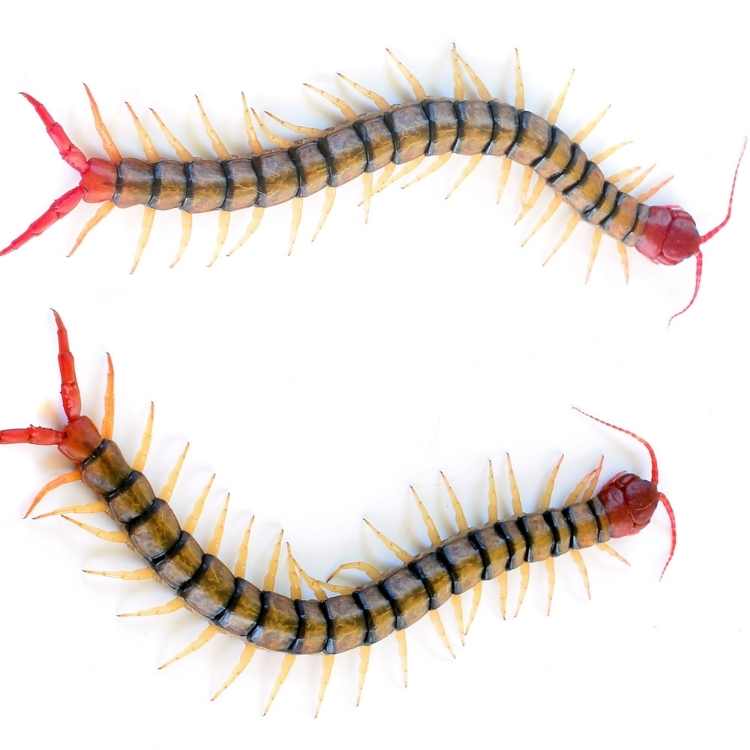
Does seeing a centipede mean bad luck?
As with any creature, reading the energy and message they are sending you before making any assumptions is important. If a centipede crosses your path, take a few deep breaths and see what comes up for you.
Is there an area of your life that feels out of balance and needs stability? Are you feeling courageous enough to face some obstacles head-on?
Centipedes can be helpful guides when we’re ready to confront what needs our attention in our lives. They aren’t always easy to work with, but they can teach us a lot about strength, speed, and adaptability!
When approached with an open mind, these creatures can offer great insight into what must change for us to move forward on our spiritual paths.
So, the answer is no; seeing a centipede does NOT mean bad luck.
Conclusion
Centipedes are fascinating creatures whose spiritual significance has tickled the imagination of people around the world. Whether they appear in myths, literature, or spiritual traditions, they inspire us to regenerate, adapt, and overcome our everyday challenges.
For some further reading, we recommend our epic post: insect symbolism.
For some further reading, we recommend our epic post: insect symbolism.
What does the centipede symbolize in different cultures?
The symbolism of the centipede varies across cultures. In some cultures, the centipede represents luck and protection, while in others, it is associated with fear and danger.
Are centipedes considered good or bad luck?
It depends on the culture. In some cultures, the centipede is considered a good luck symbol, while in others, it is seen as a bad omen or a symbol of evil.
What is the significance of centipedes in mythology?
Centipedes are often featured in myths and legends across cultures. They are sometimes portrayed as cunning and powerful creatures, while in other stories, they represent transformation or regeneration.
Can centipedes be used in spiritual practices?
Yes, in some cultures, centipedes are believed to have spiritual properties and are used in healing rituals or as a protective talisman.
What should I do if I encounter a centipede?
If you encounter a centipede, it’s best to avoid touching it as some species can be venomous. If you need to remove it from your home, it’s recommended to use a jar or container to capture and release it outside.
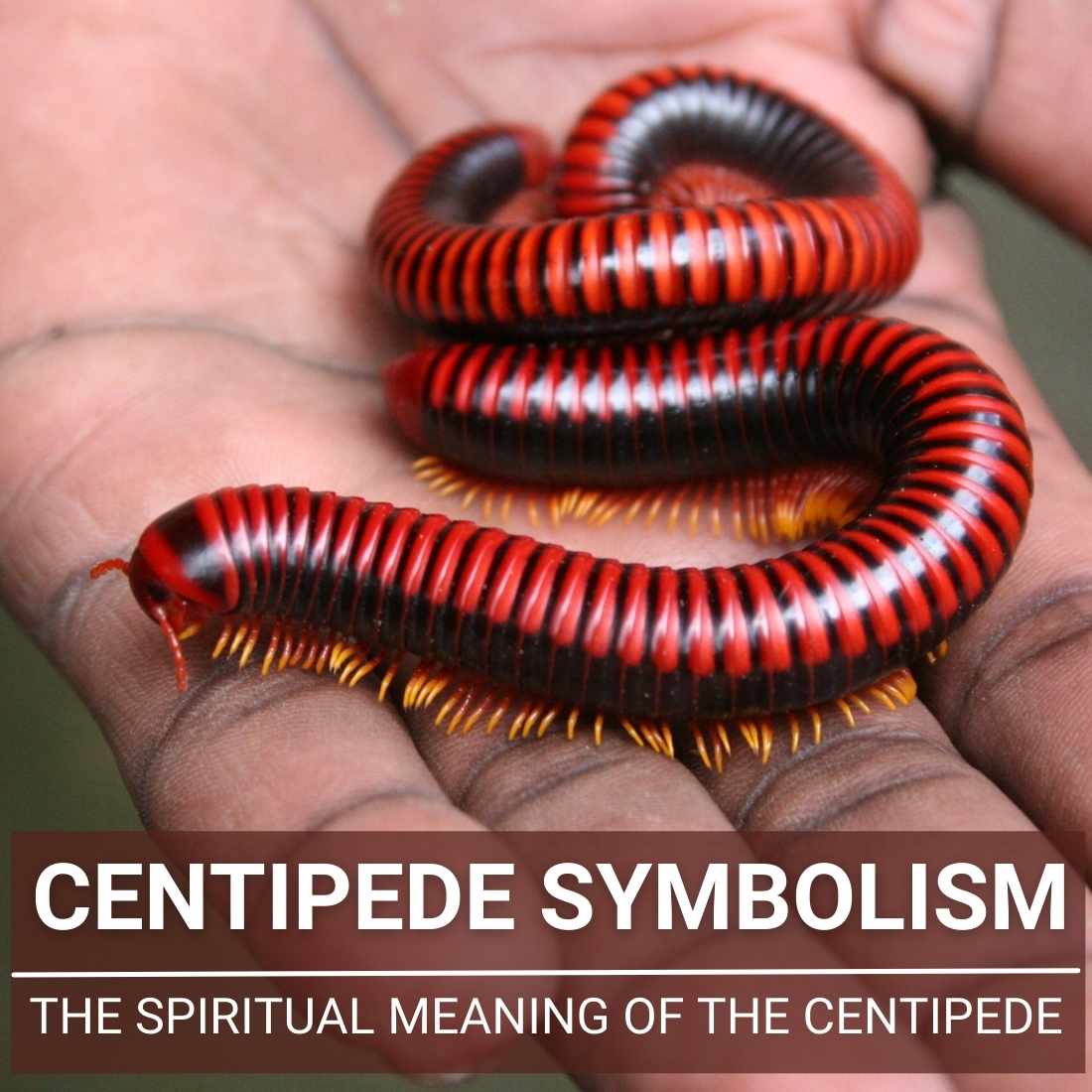




This was very helpful and interesting, thank you.
I only rarely saw centipedes in ancient greek sculptures and art, and once I realised that, I quickly searched for centipede+greek+symbol.
Keep up the great work